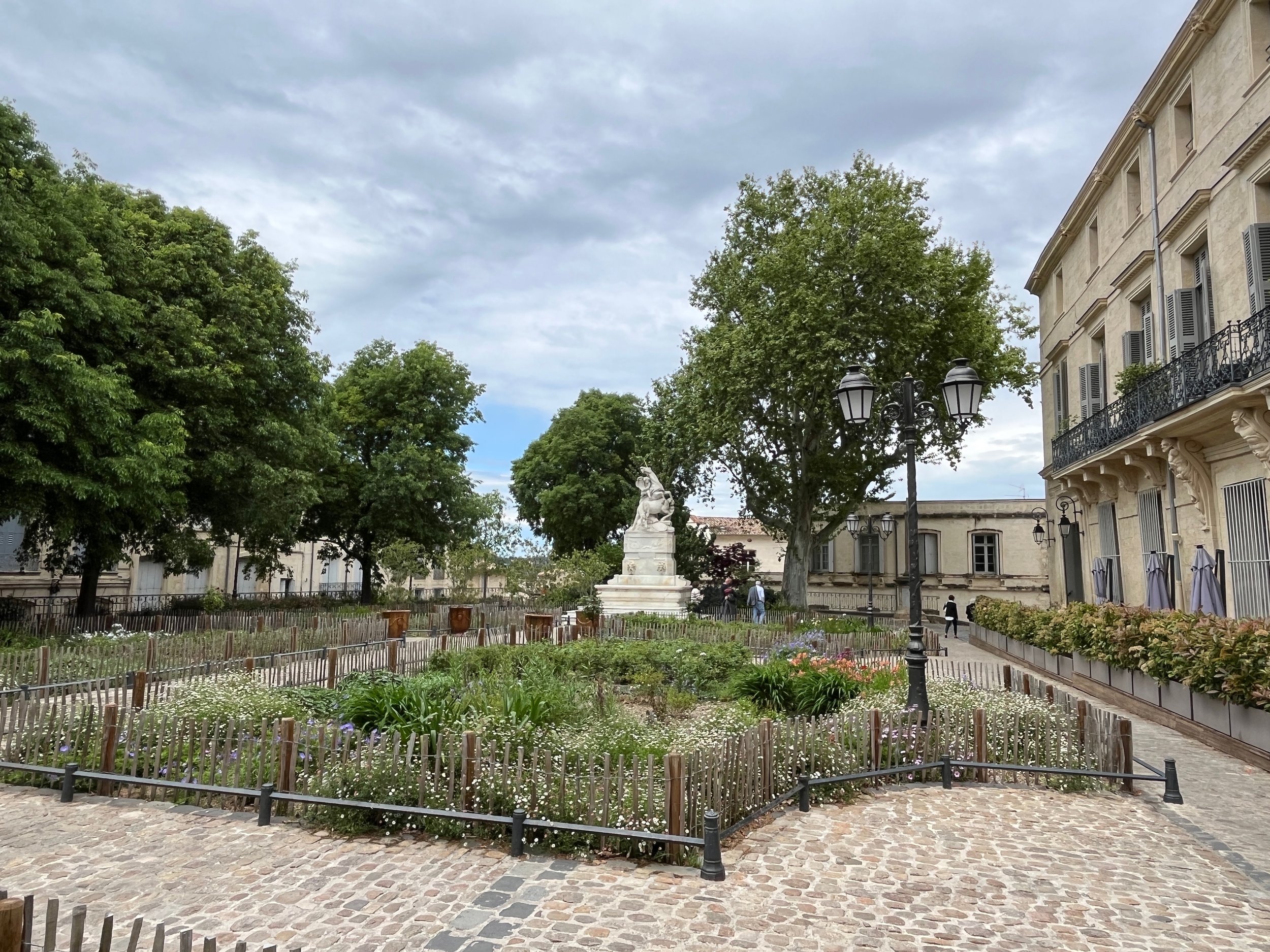Meet the Instructor: Art & Art de Vivre in Montpellier
Armelle Cassanas
Every Elective course is shaped by the local expert who teaches it. Armelle Cassanas is a longtime Montpellier resident with strong ties to the city’s arts community and an academic background that brings rigor and depth to every discussion.
As the Instructor for Art & Art de Vivre in Montpellier, she shares her perspective and creativity, along with a sunny spirit that reflects the city itself.
This course explores art in its many forms—visual, architectural, decorative—alongside the French notion of art de vivre, in one of France’s most vibrant and culturally layered cities.
Read on to learn more about Armelle's background, her connection to Montpellier, and what makes this Elective so special.
Q: You’ve lived and worked in Montpellier for many years. What makes this city such a compelling place to explore through the lens of art and art de vivre?
A: Montpellier is an extraordinary blend of old and new—medieval streets, lively markets, modern architecture, and a buzzing creative scene. It’s a place where people truly savor life, whether through leisurely café conversations, dancing by the river, or spontaneous pop-up exhibitions. That everyday richness embodies the city, where life unfolds outdoors in the Mediterranean sun and the warmth of the people is part of the landscape.
Q: At Elective, we say the destination is the textbook. How does Montpellier bring the themes of this course to life?
A: Montpellier is a city where art and art de vivre aren’t confined to museums or galleries—they’re woven into the rhythm of everyday life. From its fountains and statues tucked into hidden squares, to antique shops piled with unexpected treasures, to restaurants in historic bathhouses and old wine cellars—carved out of the bones of the city—Montpellier invites you to experience beauty, history, and creativity in every corner.
Q: Art de vivre doesn’t have a direct English equivalent. How do you define it—and how will students experience it during this course?
A: For me, art de vivre is the philosophy of appreciating beauty, enjoying daily rituals, and finding meaning in how we live. It encompasses everything from the way a home is arranged to how meals are shared and how time is spent, to appreciating sensory details—color, texture, taste, rhythm—and recognizing how these shape our everyday lives. Staying at the Château de la Piscine adds another layer—its architecture, gardens, and ongoing restoration make it a living case study in French aesthetics and heritage.
Q: You’re deeply embedded in Montpellier’s arts community, yet your PhD is in sociolinguistics. How does that combination enrich the experience for students?
A: My background in sociolinguistics gives me a unique lens on how language, culture, and identity shape artistic expression—and my deep connections in Montpellier’s art world open doors for our group. Whether it’s a conversation in an artist’s atelier, a behind-the-scenes look at contemporary collections, or an invitation to a live rehearsal, these moments bring context and intimacy. They allow students to see the city as real insiders, through the eyes of its creators.
La Place de la Canourgue, one of Montpellier’s many charming squares.
Breakfast at Château de la Piscine, which is home to Elective students for their week in Montpellier.
La Panacée: Montpellier’s contemporary art center and a favorite gathering spot for creative minds.





